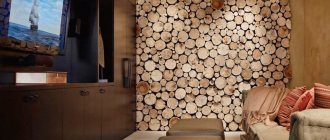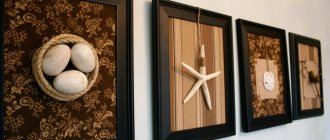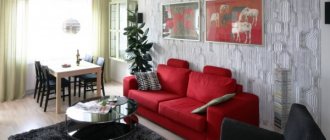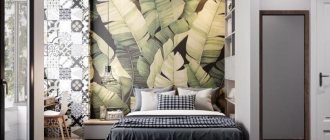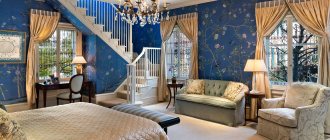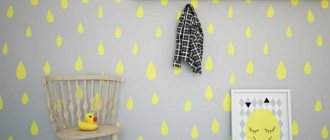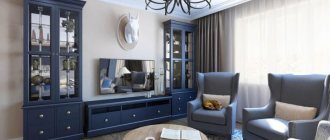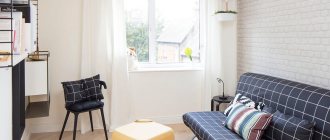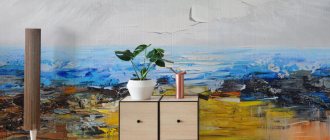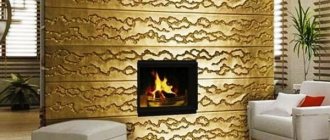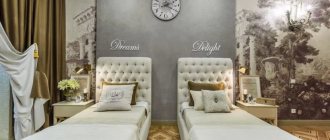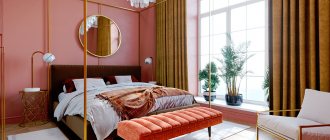There is no need to throw away the remains of old wallpaper - you can use them to make an original panel.
Numerous remains of multi-colored and even differently textured building materials can easily be used to create a wallpaper panel for the wall, a photo of which will then be taken by pleasantly surprised relatives and friends. Pieces of any size are suitable for work. The main thing is to combine them correctly. It is not necessary to maintain symmetry. It is enough to correlate them harmoniously.
Using Frames
Before you make a panel out of wallpaper, you should decide on the choice of frame for it. You should know that frames look best on a plain or multi-colored (variegated) wall surface. Therefore, when choosing it, you should take into account the features of the room and its interior, and also think about what effect they will produce.
Decoration around the edges of the panel is done in various ways:
- without frames, when strips of wallpaper are glued end to end;
- framing from a strip of wallpaper, when a certain fragment of the desired color or pattern is cut out;
- volumetric baguette made of wood, plastic or metal;
- old or aged wooden frames (used in vintage style interiors);
- gypsum decorative overlays.
When choosing the type of frame, you should strive for its harmonious combination with other decorative elements.
Framing
Before you start creating your own masterpiece, you should decide whether this object will be framed in a baguette or left in free flight. To do this, it is necessary to take into account all the features of the interior. Many decorators believe that unframed paintings are best placed on plain surfaces, but for patterned walls it is necessary to enclose the composition in a limited space. The material for frames can be very different - plastic, metal, wood, plaster. There can be many options.
Wood is considered a universal option and fits almost any style. At the same time, you can buy a ready-made frame in the store - fortunately, the modern choice is great. Or you can make a frame from thin slats and give it the desired shade using varnish, stain or paint. Wooden frames are especially good for ethnic interiors.
For minimalist design and high-tech style, plastic or the cold shine of metal are suitable. Products made from these materials are also presented in a wide range in stores. But to make frames yourself, you will need some skills.
To decorate the wall decor, you can also use ceiling cornices made of foam plastic or plaster. Such frames are also universal and fit almost any interior.
Applications of patchwork
With this option, the panel consists of many different pieces of wallpaper with different patterns, ornaments and different colors. A feature wall is an image made up of small cut-out "spots" (usually square, rectangular or diamond-shaped).
The patchwork design is ideal for decorating a child's room, as well as for rooms in a vintage or retro style. However, when choosing a composition, you must choose no more than 3 combinations of patterns or shades of images.
Fragments of wallpaper are pasted in random order, next to each other or overlapping, so that the resulting image resembles a patchwork quilt. Important tips: for patchwork, it is better to choose wallpaper of the same density, and you need to glue them as tightly as possible so that the edges do not diverge.
Panel for children's room
Figures made from pieces of wallpaper will look great in the interior of a baby’s room. This will help you decorate the room in an original way with animal figures, colorful balls, letters or numbers, and plants.
This option resembles an applique, but its fragments should be selected according to color and harmonious combination. You can use fairy-tale characters or images from movies and cartoons.
Some recommendations for choosing fragments and material:
- in a children's room it is better to use washable wallpaper so as not to waste time erasing “children's works”;
- It is better to make the choice of drawings together with the child;
- do not use easily torn fragments or decorative elements;
- It is better to place the drawings in such a place that the baby cannot reach them.
Static panels on the wall
For such panels, sheets with preliminary markings (rectangular or square) are used, and pieces of different rolls can be combined with each other. Static panels on the wall with wallpaper (photo below) are often used to decorate niches or zoning a room to separate, for example, a workplace from a relaxation area.
Read also: How to make Ghee
Executing the composition requires preliminary understanding of the design and style of the room. For a harmonious combination of canvases, there must be at least 2 of them; contrasting colors and patterns can be used, and it is recommended to decorate the edges with baguettes. Below we will tell you how to create a panel from a background.
How to decorate the walls: photographs and drawings
If you have a happy family, then a suitcase with photographs is definitely hidden in your bins.
The next answer to the question of how to decorate the walls of a room will be compositions from photographs. By choosing original photo frames in the same style, you can decorate a photo panel on the wall, presenting the whole story of your life.
Creating a photo collage is not at all difficult. Note that family photos are perfect for the living room and bedroom, and in the kitchen you can decorate the wall with photo compositions of captured fruits, vegetables, spices, adding a bright accent to your interior.
Also, beautiful wall decor from photographs can be complemented with children's drawings
Such originally designed walls always attract the attention of guests and delight the household for a long time with positive emotions about the past time.
Things to consider
Having figured out how to frame photo wallpaper on the wall, you need to take into account some special points. For example, the following:
- It is important to consider the color scheme of the room. On photo wallpaper there is always a main tone and a contrasting one. It is this contrasting color that you need to focus on - select wallpaper to match it, or vice versa, choose a photograph with a contrasting color that matches the existing design.
- The best place for such decor would be a wall completely free from other decorative items. You shouldn’t load it with additional decorations, much less place other photographs or paintings on it.
- Use only very sharp knives to trim the edges of photo wallpaper if the picture is made up of several fragments - a dull knife blade can cost you completely damaged material.
- Always carefully weigh the decision to purchase a particular image - you will have to look at the picture for a very long time and a bad choice can ruin the whole impression in just a few days.
Otherwise, there are no particular difficulties with decorating walls in this way. The main thing is not to rush, do everything carefully and follow the recommendations of the wallpaper manufacturer. If you are using your own version of the image, printed on a wide-format printer, it would be a good idea to ask the manufacturer how to paste such materials.
Algorithm and manufacturing technologies
Making panels from wallpaper and frames is a fairly simple process that anyone can master. You just need to follow a competent algorithm of actions:
- Bring the wall covering into proper shape. Level it and replace worn wallpaper, if necessary.
- Apply markings at the intended location for the frame using a level.
- Based on the intended dimensions, prepare the necessary molding elements and attach them to the wall.
- In accordance with the size of the frame, cut out the desired part of the wallpaper, photo, shapes or ornament.
- Paste the wallpaper inside the frame.
- Trim excess edges around the perimeter of the frame with a sharp utility knife.
- Paint the wallpaper if this was planned.
- Allow the created composition to dry thoroughly to avoid possible damage and defects.
Depending on the purpose and the required result, one of three well-known technologies for creating panels on the wall surface is used:
- integral pasting - the image is formed from a single fragment of the canvas (photo wallpaper is suitable for this task);
- patchwork technology - creating a pattern from pieces of different wallpaper in an abstract style;
- combination method - using in one room a complete picture and an image made from patches.
Creative wallpaper in a frame is a simple universal method of transforming any room interior. The main thing is not to forget about moderation and follow the rules for combining elements. Then it will be possible to highlight the strengths of the interior and add piquancy to it. If necessary, the composition will help to enlarge and delimit the space of the room. All you have to do is turn on the flight of fancy and start experimenting.
How to make a panel of wallpaper on the wall with your own hands: photos and procedure
To make a wall panel you need the following materials:
- pieces of beautiful wallpaper;
- slats or foam molding (possible for ceiling);
- miter box - a tool for cutting slats at a certain angle;
- paint for painting baguette;
- masking tape;
- pencil and knife.
Operating procedure:
- First, it is recommended to make markings on the wall using a regular pencil;
- cut the slats and glue them in the right places on the wall;
- paint in the chosen color, having previously covered the adjacent areas with masking tape so as not to get dirty;
- Cut the wallpaper to the desired size and paste it inside the frame.
After selection, the selected pieces of wallpaper are glued to the wall end-to-end. To highlight the edge, you can use ready-made slats or foam baguette, which are glued at the joints of different strips of wallpaper.
Interesting decor and location
You can make wide frames from wallpaper, for example, about 15 cm. In this case, the inside of the picture will be empty, and the wall will be visible through it.
You can put an interesting inscription on a wallpaper picture, for example, a motivating phrase, a wish or a verse you like.
Location:
- paintings are hung on the wall;
- small paintings decorate the desktop;
- Large images are placed on the floor.
Solid wallpaper panel
Essentially, a panel made from whole sheets of wallpaper is an accent surface on the wall that can be framed with a wooden frame or baguettes. The convenience of the latter lies in the ease of repeated painting: to refresh the decoration of the room, it is enough to simply give a different shade to the homemade frame.
To create an interesting decor, it is better to use fabric or non-woven wallpaper. In certain styles, bamboo-based finishes are also appropriate.
Such an insert can be safely moved outside the wall. For complete zoning of the room, you can stick panels on the ceiling, which will allow you to highlight a specific area of the room. The ceiling panel looks especially attractive above the podium.
For a more original decoration of the room, you can create voluminous modular panels that look especially impressive in monochrome tones. To make a similar decor, you need to paste the wallpaper onto a sheet of chipboard, hiding its free edge with the material.
Types of wallpaper for the bedroom
Almost any wallpaper is suitable for a bedroom, because this is not a bathroom, a kitchen or a hallway, where they constantly get dirty and need to be washed. Therefore, you can safely focus on your aesthetic preferences and interior ideas.
Paper wallpaper
Paper wallpaper is the simplest and most budget option, which pleases with a rich palette of shades. They are not very durable and can fade in the sun, but they are quite enough for the bedroom. Especially if you regularly do cosmetic repairs at least once every 5-7 years.
Vinyl wallpapers
Vinyl wallpaper is denser and perfectly hides small surface defects. They are easily glued without bubbles or defects, so you can handle the repair yourself. The variety of designs is not inferior to paper ones.
Non-woven wallpaper
Non-woven wallpaper has a variety of textures and is suitable for painting, but they are more expensive. But they are easy to wash, and can be repainted on average up to 15 times. This is a great option for those who like to constantly change something.
Textile wallpaper
Fabric wallpaper is expensive, but stylish, original and elegant. They are ideal for luxurious classic styles and fit into modern eco-trends. But keep in mind that working with them is more difficult.
Photo wallpaper
Photo wallpapers have long become classics, because you can put absolutely any drawing or photograph on them. They are especially good for accent walls and decorative compositions.
Exotic wallpaper
Exotic options include cork, quartz, metallized, and bamboo wallpapers. The new modern fiberglass coating looks good under painting. And liquid wallpaper brings fresh variety to the range of decorative plaster.
We do everything with our own hands
Making a panel is not at all difficult. You need to stick a frame of baguettes on the wall, and then create the desired composition inside the frame. Or vice versa, make a composition and frame it. Polyurethane foam baguette is usually used as a frame; it is easy to cut and easily glued to the wall. You can choose a smooth baguette or with a relief pattern, leave it unpainted or, conversely, paint it. You can also use a wooden baguette or even frame your panel from thick twisted rope, which will look especially impressive if the room is decorated in a nautical style.
The main thing is that everything must be done carefully and with a sense of style and proportion.
Start making panels by marking. Draw the boundaries of the frame according to the level, preferably both internal and external, and mark a 45-degree line at the corners along which the horizontal and vertical elements of the frame will join. Prepare the necessary elements of the baguette and glue them to the wall. Select glue in accordance with the manufacturer's instructions. Now coat the seams between the elements of the baguette with white putty so that they are not noticeable. If you planned to paint the baguette, paint it.
You can make a wallpaper panel yourself, all you need is your imagination and desire
Prepare the elements of the panel and lay out the drawing on the floor on a backing. Take a photo of it and print the picture. It will serve as a guide for you when transferring the drawing to the wall. Once gluing is complete, use a utility knife to carefully trim the edges around the perimeter of the frame.
Below are a few specific ideas.
Wallpaper wall panel for the bedroom
Such a panel can be very simple. For example, take a piece of wallpaper with a geometric pattern and place it in a frame on a wall covered with plain wallpaper. Place sconces inside the panel.
Important: the color and pattern of the fragment used for the panel should echo the color scheme of the textiles: curtains, bedspreads, pillows.
So simply, quickly, and without significant investments you can update your boring interior.
Wallpaper panel on wallpaper
Wallpaper panels on wallpaper are a modern and creative way to give the room originality and uniqueness.
Usually they make a panel with a large, bright and catchy pattern, with a shiny, mirror base against the background of plain, calm wallpaper. A bright panel looks good on walls covered with liquid wallpaper.
But you can do the opposite. For example, if during renovation you wanted to cover a room with bright wallpaper, but then you realized that you were tired of it, and you don’t want to redo the renovation, make several large panels of light and plain wallpaper and you will immediately reduce the emotional load set by bright tones.
Wallpaper panels are a cheap and effective way to reduce the stress of bright rooms, or, conversely, add a bright touch to an overly dull room.
The main thing is not to overdo it and achieve the opposite effect.
Panel from leftover wallpaper
Why throw away the remains of wallpaper, because you can make an excellent panel for your room from it?
This recently fashionable trend - decorating a room with fragments of different wallpapers in a patchwork style, requires great care and good taste, because it is very easy to get the impression that you simply did not have enough money for wallpaper.
When choosing decor with fragments of different wallpaper, make sure that all selected fragments are the same in thickness.
It would be advisable to photograph the existing fragments of wallpaper and then try to assemble the panel in a computer design program and see what happens. And start working only when you know exactly what the result will look like and you will have before your eyes your future panel of wallpaper on the wall photo.
Frames for creating style
Molding in the interior is used for various tasks - creating a decorative surface, framing pictures, complementing an existing composition, dividing a room into functional zones or, on the contrary, combining the space into a single whole. Frames also effectively change the height of the ceiling, visually expanding or narrowing the room. It all depends on the purpose of their use and the choice of the appropriate type. Among the most important tasks of molding is the creation and addition of a certain style in the interior:
Baroque. It is difficult to imagine this style of style without numerous skirting boards and baguettes, frames with rich stucco molding and gilded corners. Floral ornaments and relief carvings are harmoniously combined with panels of wallpaper and decorative plaster. All these elements are framed with light light strips.
Baroque directionSource stylingroom.ru
Provence. This style is characterized by simple, straight lines, there are no elaborate shapes, you can see a relief molding at the junction with the ceiling and floor. There are no unnecessary elements here, the walls are free of stucco and other details. Light shades predominate as the general background; white, as well as pastel gray and cream tones are most suitable.
Direction ProvenceSource walldeco.ua
Scandinavian style. In this direction, the walls are not decorated with moldings, only occasionally they use frames near window and door openings, and also mark the transition zone to the floor and ceiling. The shades are light, white and beige tones predominate, which do not stand out against the background of the general colors of the room.
Interior in Scandinavian styleSource walldeco.ua
Mediterranean. In such interiors, you can use various design options using moldings - decorations for cornices, ceiling moldings, highlighting windows, doors and arches with decorative details with stucco. Curved shapes and lines predominate, and there are often many small carved elements. The brightest accent of the interior is usually a large painting depicting the seashore, a garden, or an exit to a balcony or porch. For such an element, photo wallpaper in a beautiful carved frame is used. Columns in antique style will complement the design of the room.
Interior in Mediterranean styleSource decoretto.ru
English
The most important thing here is to decorate the fireplace correctly; this can be done with the help of decorative decorations. Planks separate the joints of the wallpaper, and also place a cornice along the entire perimeter of the ceiling
The fireplace is decorated with the same elements. At the same time, the details should have a simple geometric relief and calm pastel shades. Classical. Some apartments in old buildings are designed in this style. They are distinguished by high semicircular window openings, arches, columns and various options for moldings. All interior elements are decorated, and the ceiling is also separated using baguettes. The classic allows for the decoration of walls with wooden panels, so here you can use various carved decorations in all sorts of variations.
Design tips
Before starting work, you should pay attention to 3 main factors:
- degree of illumination of the room;
- the predominant color scheme or background of the walls, their texture;
- accessories placed in the room.
Expert advice will help you choose the right and harmoniously compose the composition:
- in a small room you can achieve a visual expansion of the space using a composition in light shades, preferably pastel colors;
- when decorating a room in a classic style, warm colors are preferred: beige, golden, red or burgundy;
- in a spacious room, the place of the composition should be dominant, otherwise it will get lost.
Wallpaper paintings under glass
It is best to hide under glass compositions made from fabric and paper wallpaper, as well as paintings with details made from fragile materials that require careful care and are not resistant to washing:
- threads;
- ribbons and lace;
- dried flowers and herbarium;
- glitter and colored sand.
For example, you can make an unusual picture for the hallway, corridor or kitchen with the image of a vase. It is necessary to paste the silhouette of a flowerpot onto a background of fabric wallpaper. You can decorate the composition with dry herbs, unusually shaped branches, and dried inflorescences.
It is better to prepare flowers for decoration under pressure so that they are as flat as possible.
Anti-reflective glass, which is highly durable and very easy to clean, will help preserve the original picture. An original frame in a vintage style will complement a homemade panel of dried flowers.
Photo wallpaper can also become a special touch in the interior design of a home. This decor looks impressive in the bedroom and living room. Wallpaper can be placed either in one large photo frame or in several small ones, having previously thought out a modular composition.
Wall decor from fragments of floral wallpaper: applique
Flowers cut from wallpaper decorate the living room, hallway or bedroom.
They are supplemented with painted twigs or blades of grass. It can be a large flower or a composition of several buds and flowers. The painting must be placed taking into account the furniture, for example, a panel standing on the floor should not be blocked by a table or pouf.
You can make a pattern out of small flowers, for example, the silhouette of a cat, a house, a tree. These elements are suitable for creating entire paintings.
Photo wallpaper is an interesting solution
Currently, modular paintings are becoming increasingly popular. They represent an image divided into several elements located at a short distance from each other. It is photo wallpaper pictures with a suitable pattern that can be used to create such interior sophistication with your own hands.
If you divide inexpensive photo wallpapers into separate segments, then their decorative content increases by an order of magnitude
It should be borne in mind that this facing material leaves virtually no scraps needed for work. But you can pick up products in a hardware store that are sold as substandard.
The creation process is as follows:
- A light and reliable base is selected from several parts of different sizes.
- They are placed on the wrong side of the image and outlined step by step without leaving any gaps. Everything is numbered.
- Fragments are cut out and glued to the base. If necessary, coated with a special varnish.
The correct arrangement of modular elements is of great importance; it is important to achieve the impression of unity of all lines.
How to transform an interior from leftover wallpaper
Page navigation
For the interior, remnants from one or more rolls are used. Some construction stores sell leftovers at a discount; here you can purchase one roll to create an interesting picture or panel. When choosing, you need to pay attention to the pattern and color; they should be in harmony with the design of the apartment.
Furniture decor with wallpaper
Covering old furniture with paper trellises is a godsend for those who adore Provençal motifs in design. With the help of excess finishing materials, you can create an original piece of furniture that will become the center of the decoration concept.
The technique for decorating a set is similar to decoupage, but does not require soaking the wallpaper with water. To glue wallpaper patches, you need to properly prepare the set.
- Clean the surface of the furniture from varnish and old paint.
- Get rid of cracks using putty.
- To obtain a perfectly smooth surface, treat it with sandpaper.
- Prime the work area with acrylic primer.
You can paste leftover wallpaper not only on the façade of furniture. For example, manufacturers often pay little attention to the internal surface of the headset. To create an original and stylish decor, simply glue wallpaper to the back wall of the sideboard. To improve the wear resistance of the material, additionally coat the surface with two layers of varnish.
Furniture decorated with bamboo wallpaper looks original. This set will fit perfectly into an oriental-style interior. For the Scandinavian trend, trellises with imitation of natural stone or spectacular wood are suitable.
Creation technology
How to make a decorative panel on the wall of a living room or kitchen? First of all, a frame made of baguette is glued to the wall, which will indicate the boundaries of the future work. In the catalog you can choose a beautiful wooden or polyurethane foam baguette. This structural element can be decorated with a pattern, painted or requiring painting. If you plan to use wallpaper and wall panels in a marine style, the frame can be made of rough rope.
Having fixed the frame on the wall, we move on to markings. The ideal option is marking in squares. This way it will be immediately clear where and what element needs to be glued. Using similar markings, you should cut the wallpaper. In order not to lose the sequence, you can put the elements into a single picture and number each of them. After gluing the pieces to the wall, carefully trim the edges if necessary.
Varieties and Variations
In the rooms, paintings with different designs are used for decoration:
- with a frame made of wood, metal, plastic. For a panel, the frame can be made of polyurethane baguette;
- a picture without a frame, in this case the wallpaper is glued to a stretcher and folded over the end sides;
- consist of a single pattern, or it can be a composition of different rolls.
According to the layout of the paintings, they are located:
- single, it can be one small painting or a panel the size of the entire wall. They are most often used for walls;
- group, the motif is repeated in several images;
- group, where the paintings consist of different images, but they can be united by theme, color, for example, these can be monochrome images with different patterns.
DIY painting for the home: how to make it?
The work must be done in the following sequence:
- first you need to prepare materials, cardboard of the required size, fragments of wallpaper, PVA glue, double-sided tape, scissors, pencil, triangle;
- You need to glue the wallpaper onto the cardboard base; this can be done with glue. For a small base, you can use double-sided tape. It is glued along the perimeter of the cardboard, the protective tape is removed from one side and the cut-out fragment of wallpaper is glued. Then carefully remove the protective tape from the sides and stick the wallpaper, carefully leveling it;
- when using glue, you need to give the painting a chance to dry, this is especially important for paper rolls;
- if the picture should consist of a background and an appliqué, then the background is glued to the cardboard with glue, the base is allowed to dry and only then the fragments are glued;
- After drying, the painting is framed.
If you glue a background of wallpaper to the base with tape and then stick on appliqués, the background may become deformed
Natural edging
Picture frames are traditionally made from hardwood or tropical wood. They may differ in profile type and thickness. The wood is treated with stain and coated with matte or glossy varnish. Sometimes gold or silver plating is used. This option is suitable for an apartment in the style: classic, English, eclectic. For an interior in a modern style, a wooden profile without coating and carved parts is suitable.
Decor options
For a painting with a pastel or plain background, you can choose interesting decor. These may be applications from other wallpapers. First you need to prepare a template from plain paper and think over the composition. Applications depend on the interior and purpose of the room: butterflies, circles, stars, silhouettes of domestic and wild animals. It can also be patterns or flowers on the wallpaper. Applications can be the same size or different. They are glued to a completely dry wallpaper base using PVA glue.
It is not recommended to use stick glue, as the appliques may come off over time.
First you need to think over the composition and place the cut out decor. If there are a lot of parts, they need to be glued gradually, large parts are glued first, then small ones. The glue is applied in a thin layer using a brush, then the decor is carefully glued.
How to make an image more expressive
For effectiveness, you can use a passe-partout. This is a light background that allows you to separate the frame from the image, it can be wide or narrow. It can be made from light-colored wallpaper with a dim pattern. A picture in light colors can be emphasized with a mat of dark, soft colors. Passepartout can be:
- single;
- multi-window, consisting of windows of the same or different sizes;
- multi-layered, consisting of colored frames.
- it can also be decorated with various materials, such as ribbon, beads,
- volumetric passe-partout.
How to glue a canvas or modular composition - description, photo of the result
From simple
Ordinary wallpaper on any base from vinyl to non-woven is the most common material for creating paintings and decorative panels (read about the features of gluing vinyl wallpaper here, and from this article you will learn how to properly glue wallpaper on a non-woven basis). The work consists of several stages:
- Cut out the cardboard base to the required size.
- We cover it with basic wallpaper. They can be either plain or have a special texture and pattern (how to economically glue wallpaper with a pattern?).
- Using a stationery knife or thin scissors, we cut out various elements from the available scraps: flowers, geometric shapes, patterns, ornaments.
- We evenly saturate the inside of the cut out elements with PVA glue and glue the parts onto the prepared base according to your sketch.
- Use a frame for final decoration. It will allow the work to last longer and give it a finished look.
When working, it is better to use wallpaper of the same type and thickness. This will allow you to harmonize the elements according to texture.
Important Modular paintings made from wallpaper from the same line look very impressive. These wallpapers usually have the same pattern, but differ in color
By collecting a number of such shades, you get an unusual design solution for decorating a bedroom or living room (read about how to choose the right wallpaper for a bedroom here, and from this article you will learn how to beautifully and stylishly hang wallpaper in this room).
Another interesting option is to create a modular system of wallpaper of the same color or even monochrome, but with different geometric, floral or animal patterns. Prints in the same color will combine and create a unique, mesmerizing effect.
From liquid
This new finishing material is just entering the arsenal of our compatriots and is gradually gaining popularity. Liquid wallpaper is perfect for creating a picture, moreover, a three-dimensional image.
A picture of liquid wallpaper is made directly on the wall. It is first necessary to determine which image will harmoniously combine with the furniture and color scheme of the room.
A picture made from liquid wallpaper cannot be simply removed and pushed behind the closet.
The work is reminiscent of classical drawing. The material is diluted, laid out in several containers, each with its own color added. A sketch is first applied to the wall, which is then “painted over” by applying liquid wallpaper (we talked about how to properly dilute them and apply liquid wallpaper in a separate article).
A huge advantage of liquid wallpaper is the ability to create any layer thickness. Thus, with some skill and dexterity, you can create a three-dimensional image. But be careful: a thick layer takes a long time to dry - up to 2 days.
From photo wallpapers
Photo wallpaper is the easiest way to create an interior picture. Firstly, they can be glued directly to a plain base and cover most of the wall with them. Secondly, using a little ingenuity, you can create an effective modular picture in a frame with a landscape, a view of a metropolis or an abstraction that you like (read about how to choose the right photo wallpaper for the living room and other rooms and combine it with the interior, and we talked about how to hang photo wallpaper separate article).
Attention Please note that you cannot stretch photo wallpaper onto a stretcher. This process “eats” part of the picture at the folds, and as a result the image will be broken
It is best to use cardboard as a base.
The process of creating a picture from photo wallpaper will not take much time:
- Lay out the photo wallpaper on a flat surface.
- Choose the number and sizes of modules. There may be three vertical ones, or there may be nine, arranged asymmetrically in several rows.
- The bases of all modules are cut out of thick art cardboard.
- Photo wallpapers are cut into pieces equal to the bases and glued to them. We recommend applying PVA glue evenly over the entire surface of the wallpaper to avoid the appearance of wavy lines.
- Each element is framed.
- Frames with painting elements are hung in the required order, and an equal distance between the modules must be maintained.
Advantages of wallpaper panels
Panels in the interior of the living room The positive aspects of using this material include:
- a wide variety of options - today you can purchase panels that differ in the production material, the principle of applying the image, theme, color design and other characteristics, users only have to choose a product that meets specific needs;
- environmental friendliness - only safe raw materials are used in the production process, which do not emit toxic substances into the atmosphere even when heated, so the products can safely be used in a children's room or bedroom;
- durability - the material does not fade in the sun, has sufficient abrasion resistance, moisture resistance and many other positive aspects, due to which it can maintain its magnificent appearance for a long time;
- ease of installation - the panel does not require adjusting to size or cutting; it is produced in ready-made sizes, which can only be carefully glued to the wall or ceiling. The only difficulty that you may encounter when gluing is the joining of the parts that make up the panel; the number of elements can be from 1 to 16, depending on the size of the finished product;
- ease of care - caring for the surface of the panel is as simple as possible, just remove the dust in time, and if necessary, wipe the product with a slightly damp cloth. In case of severe contamination, such products can be washed in the same way as non-woven or vinyl wallpaper;
- exclusivity of the finished interior - the product can be glued to the entire wall, to part of it or to the ceiling, thereby creating a unique look for the room; in addition, due to the variety of appearance, you can always create a unique and inimitable interior in your home.
Thanks to such properties, the material can be used not only in living rooms, but also in general purpose premises, for example, it can be a decorative panel on the wall in the bathtub or kitchen, and so on.
Wallpaper for the bedroom In general, panels can be classified not just as finishing materials, but as some kind of art. After all, this decorative element is used to decorate the space. However, it should be borne in mind that such a product differs from paintings or photo wallpapers, since here, most often, there is no artistic image or landscape. The image represents ornaments, patterns or geometric shapes. Of course, nature, animals, human figures, and so on can be depicted here, but such an element is not an independent type of creativity. It requires a permanent place, for which it is created. This means that the panel is not intended for frequent changes of location, and if you still get tired of the product, it will have to be removed and disposed of or replaced with another.
Types of decorative panels
There are several varieties.
Tile
With the help of this decorative decoration, it is possible to significantly dilute and diversify the atmosphere in the room, making it especially beautiful.
From wallpaper
Using sections of wallpaper you can easily create an unusual accent on the wall and give the room an attractive, fresh and updated look.
Foamiran
Thanks to such a picturesque panel on the wall, combining graceful elegance and beauty, it turns out to harmoniously complement almost any interior.
From paper
It is an affordable and simplest, but at the same time very stylish and original solution for decorating a space. Paper is a fairly malleable material and has a number of techniques for creating wall compositions, such as quilling or scrapbooking.
Plaster
They are a very impressive and expensive wall decoration, which personifies high culture and a sign of excellent taste.
The photo shows a small rectangular plaster panel located above the bed in the bedroom.
Traffic jams
Wine corks can have different looks and shapes; with their help, you can create very stylish, both round and square panels that fit wonderfully into any interior design.
From fabric
This simple and at first glance unremarkable wall decor can become a real work of art, decorating the space and ideally matching the style of the room.
Leather
A leather composition can be easily created from various scraps or old leather products and accessories. This design is considered original and has a very impressive and aesthetically attractive appearance.
Metal
A metal installation opens up a huge variety of decorative possibilities and allows you to add some zest to the interior, giving it an originality.
From threads and nails
Using the string art technique, which involves creating compositions using threads and nails, you can achieve a unique and extraordinary wall design, creating a non-boring and non-trivial design.
Food
A variety of products are used for such compositions, such as cereals, coffee beans, dried fruits or vegetables, spices and much more. This decor is especially relevant for the kitchen space.
Light
Thanks to such an original and bright accessory, with light elements located over the entire surface or fragmentarily, you can create the main accent on the wall in the room.
Shells
The panel made of shells has a truly mesmerizing appearance and combines simplicity, unpretentiousness and mystical beauty, which makes you want to look at it for a long time.
Stones
Due to the unusual texture, color and interesting pattern of onyx, marble or other stones, it is possible to set the tone and mood of the entire interior and create a bright accent in the space.
Moss
Mossy decorations represent an evergreen beautiful picture, undoubtedly becoming a true interior find.
The photo shows a panel made of stabilized moss, decorated with a black frame.
Flowers
Dried flowers, such as marigolds, asters, roses or poppies, which perfectly retain their natural shape after drying, are often used to create decorative panels that can give a room a certain imagery.
Cones
They are an environmentally friendly, amazing and beneficial natural material that has a spectacular and stylish look and allows you to get very beautiful wall decor.
Leaves
Thanks to the natural warmth and naturalness of the leaves, they add brightness, positivity and special naturalness to the room.
Bamboo
This decor is unusual, original and at the same time uncomplicated and simple. Due to the wood structure and warm color, the furnishings are filled with exquisite exotic motifs.
Tree cuts
They have an interesting, stunning and as if created by nature, appearance, which allows you to further emphasize the individuality of the style.
Tree branches
With the help of such accessible material, it is possible to create a light composition or a modern and unusual installation on the wall.
